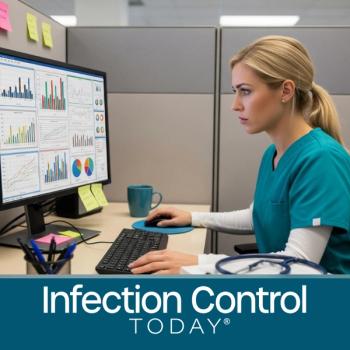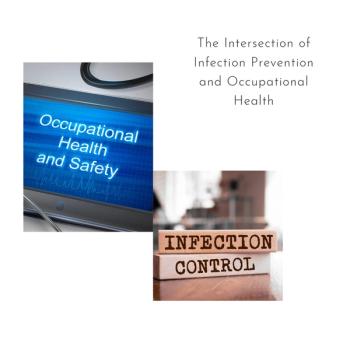
- Infection Control Today, April 2022, (Vol. 26, No. 3)
- Volume 26
- Issue 3
The IP Relationship With Clinical Staff Is a Critical Partnership
The COVID-19 pandemic strengthened the relationship between infection preventionists and clinicians, but how can both parties ensure continued collaboration?
Infection preventionists are like coaches. We often facilitate the work of a team, assess strengths, teach skills where there are opportunities or gaps, devise strategies for preventing health care–acquired infections, and look at long-term outcomes and goals. Like coaches, infection preventionists have different styles of collaborating with team members. Each infection preventionist brings personal experience and collaborative style to the role. Also, the culture of an organization can sometimes influence how relationships develop.
As novice infection preventionists, many of us learned how to function as leaders based on whom we trained with. Infection prevention remains a field in which training often is done through hands-on, learn-as-you-go methodology. Additionally, each infection preventionist brings a style of relationship building.
When I was a novice infection preventionist, I had the benefit of being trained by a mentor who exemplified how best to engage with clinical staff at all levels. My mentor had been in her role for many years and had worked for the organization as a staff nurse before moving into infection prevention. She made relationship building a priority for the program and knew how important it was to success. She taught me to listen first, learn what the needs of the clinical staff are, and communicate with empathy and compassion. Those techniques set the baseline for building trust.
Earning Trust
Infection preventionists without clinical backgrounds in nursing sometimes have a more difficult path to earning the trust of clinical staff. However, the same skills are effective in beginning the collaboration: Approach clinical staff to learn about their field, treat them as the subject matter experts, and be open to learning from them.
Similarly, clinical staff can have a history of how they have worked with infection preventionists, quality, safety, and similar departments. Depending on the culture of the organization, an unspoken hierarchy can exist within which certain role groups interact. If an organization has this type of hierarchy, it can be challenging for nonclinical or administrative departments, such as infection prevention, to engage clinical staff. Without that engagement, infection prevention initiatives will not succeed.
Reading the Room
Some of the interaction between professional groups stems from sociological and psychological dynamics of group relationships. The more infection preventionists can be aware of these dynamics, the better they will be at overcoming potential negative impacts. For example, concepts such as social identity and community of practice have inherent limitations to inclusiveness across professions and even within professional groups of different subspecialties.1 In these instances, the in groups see themselves as superior in knowledge and experience, and may value their own contributions as more important than those of other groups involved in patient care.1 These dynamics have been shown to inhibit quality initiatives and must be addressed early in the planning stages of programs.
There have been efforts to develop methodologies addressing these barriers in group dynamics. Overall, they are best overcome when the approach to solving issues is truly multidisciplinary and based on concepts similar to safety culture, in which there is no hierarchy, and each voice is valued and respected. Infection preventionists can also overcome some of these barriers by continuing to develop interpersonal relationships with clinical staff.
Playing for the Same Team
Infection prevention initiatives and programs need collaboration to be effective and to achieve desired outcomes. Health care facilities need to align with clinical staff to make changes, including cultural and behavioral shifts, to spread those desired changes across a multifaceted organization, and to sustain those changes in the face of evolving priorities and growth.2 Infection preventionists can start to address these challenges by identifying key stakeholders, learning what is important to them and what would get their buy-in, making relationship-building efforts a priority, and helping stakeholders take ownership of the changes.2
On the positive side, studies have shown that training in teamwork and effective communication in health care settings does translate to improved patient outcomes.3 Additionally, studies have shown that teams with higher levels of trust and quality information exchange do have direct impacts on patients’ satisfaction, pain scores, and length of stay.3 These types of studies can very easily be translated to prevention of health care–associated infections as well.
Leading by Example
In particular, transformational leadership styles have been associated with improved quality outcomes for patients.4 Transformational leadership is based on creating relationships and motivating staff through clear communication and shared vision.4 It is imperative that infection preventionists are aware of their leadership styles and attempt to build skills in areas where they may not have experience in order to utilize their position in the facility to act as leaders who will enhance patient outcomes through collaboration.
One positive outcome of the pandemic response has been an improvement in the relationship between infection prevention and clinical staff. Infection preventionists were often at the head of pandemic efforts, working early on to understand the guidance for COVID-19 response; tirelessly providing updates, education, and plans to health care teams; and working with facility administration on incident commands to help establish processes. The infection preventionist had the opportunity to engage with clinical staff at all levels and could provide updates on research, as well as offer an empathetic ear to staff feeling the burden of the unknown. In this role, functioning as part of that clinical team in such an emotionally charged setting, infection preventionists were able to increase trust and establish relationships with clinical staff that will carry forward in all other initiatives.
Future State
Building on collaborative relationships that arose from COVID-19 pandemic response, infection preventionists can use their social capital to maintain that momentum. Team building, meeting with unit-based councils, and involving direct care staff from the beginning are all ways to engage and sustain those relationships. Across the country, we have seen an increase in health care–associated infections since the pandemic started. Many years of improvements in quality and patient safety are seemingly reversed. The work of infection preventionists has not decreased since 2020. However, infection preventionists are not alone in their efforts. All of health care is delivered in the context of human relationships. The quality and safety of that care will be improved when those relationships are strong and at the center of an organization’s care delivery model.
References
- Bartunek JM. Intergroup relationships and quality improvement in healthcare. BMJ Qual Saf. 2011;20 Suppl 1(Suppl_1):i62-i66. doi:10.1136/bmjqs.2010.046169
- The CAHPS Ambulatory Care Improvement Guide, section 4: ways to approach the quality improvement process. Agency for Healthcare Research and Quality. November 2015. Updated January 2020. Accessed February 13, 2022. https://www.ahrq.gov/cahps/quality-improvement/improvement-guide/4-approach-qi-process/index.html
- Rosen MA, DiazGranados D, Dietz AS, et al. Teamwork in healthcare: key discoveries enabling safer, high-quality care. Am Psychol. 2018;73(4):433-450. doi:10.1037/amp0000298
- Sfantou DF, Laliotis A, Patelarou AE, Sifaki-Pistolla D, Matalliotakis M, Patelarou E. Importance of leadership style towards quality of care measures in healthcare settings: a systematic review. Healthcare (Basel). 2017;5(4):73. doi:10.3390/healthcare5040073
Articles in this issue
over 3 years ago
Fans, Filters, Rays, or Ions?over 3 years ago
Water: Life’s Vital Necessity Can Also Be a Pool for Pathogensover 3 years ago
COVID-19 Boosters: New MMWR Report Explores Waning ImmunityNewsletter
Stay prepared and protected with Infection Control Today's newsletter, delivering essential updates, best practices, and expert insights for infection preventionists.






